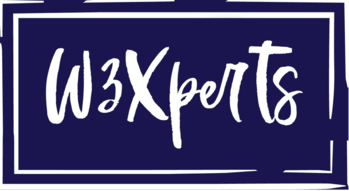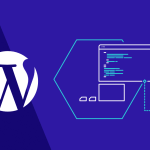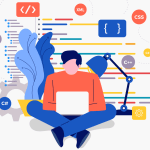As technology continues to advance, programming languages are constantly adapting to meet the needs of developers and businesses. Before moving to top 5 programming languages (2022), have a look at the trends that are shaping the future of programming languages.
Table of Contents
ToggleKey Trends
- Artificial Intelligence and Machine Learning: With the rise of AI and machine learning, programming languages that are designed to support these technologies are becoming more popular. Languages like Python, R, and Julia are commonly used in data science and machine learning projects.
- Low-Code and No-Code Platforms: As demand for software development continues to grow, low-code and no-code platforms are becoming more popular. These platforms allow users to build applications without needing to write code, which can speed up development time and reduce the need for specialized programming skills.
- Quantum Computing: Quantum computing is still in its early stages, but it has the potential to revolutionize the way we process information. Languages like Q# and Quipper are being developed specifically for quantum computing.
- Cross-Platform Development: With the rise of mobile devices and the Internet of Things (IoT), cross-platform development has become increasingly important. Languages like JavaScript, React Native, and Xamarin allow developers to build applications that can run on multiple platforms with minimal modifications.
- Functional Programming: Functional programming has been around for decades, but it’s becoming more popular as developers look for ways to write code that’s easier to maintain and debug. Languages like Haskell, Clojure, and Scala are all designed to support functional programming paradigms.
Top 5 Programming Languages
Here are top 5 programming languages to learn in 2022:
1. Python
Python has consistently been one of the most popular programming languages for several years now. It’s widely used in a variety of fields, including web development, data science, artificial intelligence, machine learning, and more. Its simple syntax and vast library of resources make it a great language for beginners to learn.
References:
- Python official website: https://www.python.org/
- Python documentation: https://docs.python.org/3/
- Python tutorial on W3Schools: https://www.w3schools.com/python/
2. JavaScript
JavaScript is the language of the web and is used to create dynamic and interactive web applications. It’s used on both the front-end and back-end of web development, as well as in game development and desktop applications. Its popularity is due to its versatility, as well as the fact that it’s supported by all modern web browsers.
References:
- JavaScript official website: https://www.javascript.com/
- JavaScript documentation on Mozilla Developer Network: https://developer.mozilla.org/en-US/docs/Web/JavaScript
- JavaScript tutorial on Codecademy: https://www.codecademy.com/learn/introduction-to-javascript
3. Go
Go is a programming language developed by Google that’s known for its simplicity, speed, and concurrency support. It’s commonly used in web development, networking, and cloud computing, and is a popular choice for building microservices and other distributed systems.
References:
- Go official website: https://golang.org/
- Go documentation: https://golang.org/doc/
- Go tutorial on Go by Example: https://gobyexample.com/
4. TypeScript
TypeScript is a superset of JavaScript that adds optional static typing and other features to improve the development experience. It’s commonly used in large-scale web applications, where type checking can help catch errors before they become a problem. TypeScript is supported by many popular JavaScript frameworks, including Angular and React.
References:
- TypeScript official website: https://www.typescriptlang.org/
- TypeScript documentation: https://www.typescriptlang.org/docs/
- TypeScript tutorial on TypeScript Deep Dive: https://basarat.gitbook.io/typescript/
5. Rust
Rust is a systems programming language that’s designed for speed, reliability, and safety. It’s used in projects that require high performance and low-level control, such as operating systems, web browsers, and game engines. Rust’s memory management system ensures that code is safe from common programming errors like null references and buffer overflows.
References:
- Rust official website: https://www.rust-lang.org/
- Rust documentation: https://doc.rust-lang.org/
- Rust tutorial on Rust by Example: https://doc.rust-lang.org/stable/rust-by-example/
As technology continues to evolve, programming languages will continue to adapt to meet the needs of developers and businesses. It’s an exciting time to be a programmer, and the future looks bright for those who are willing to adapt and learn.














